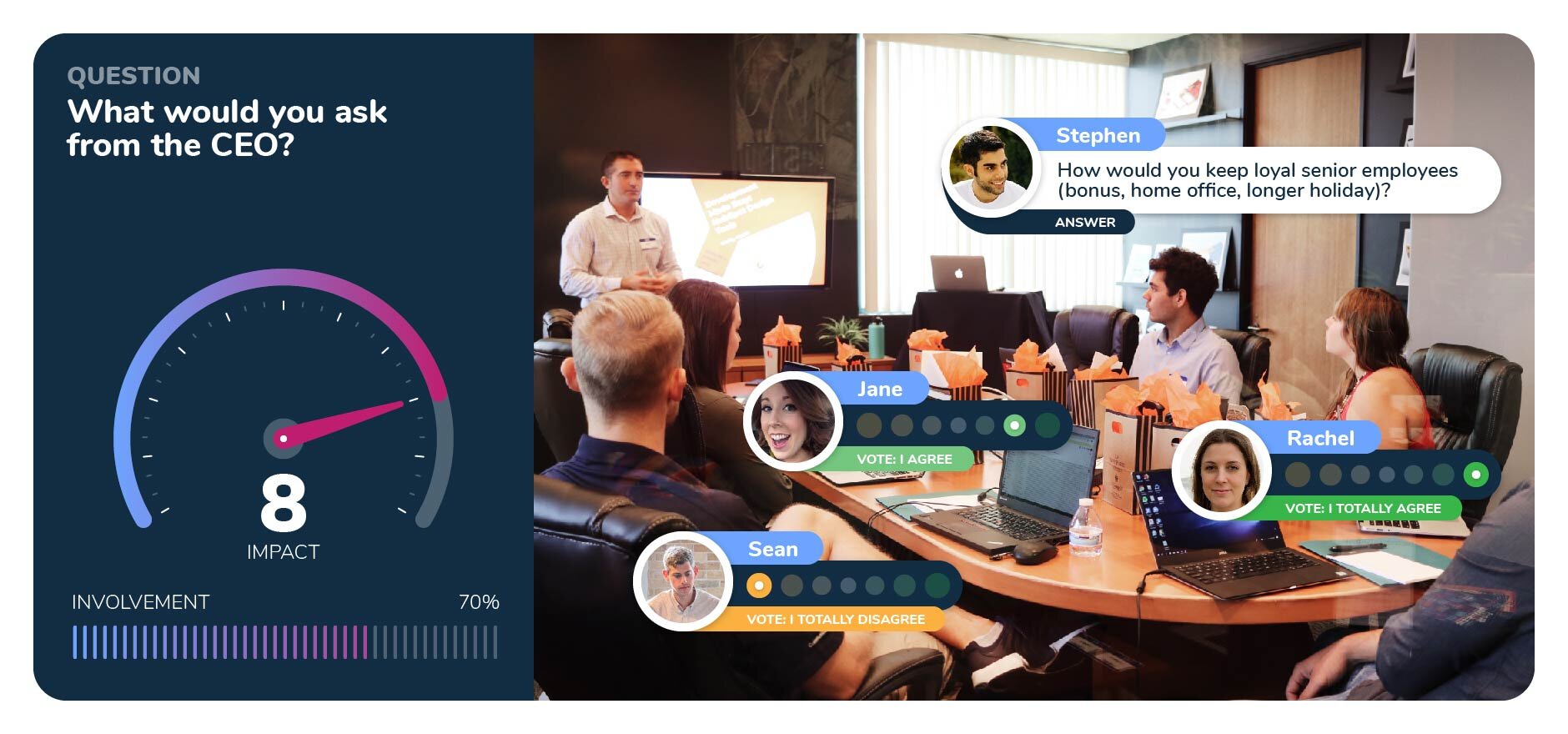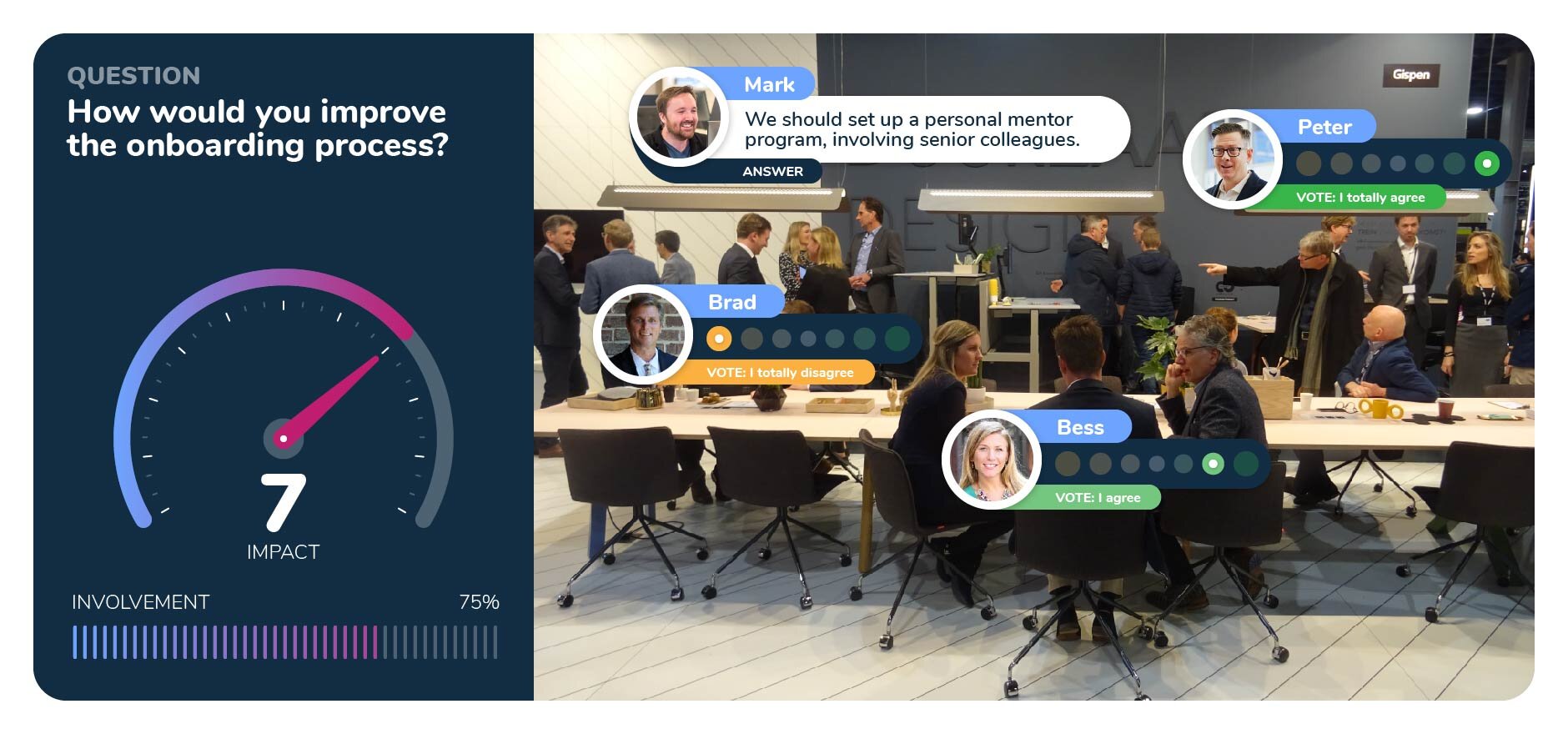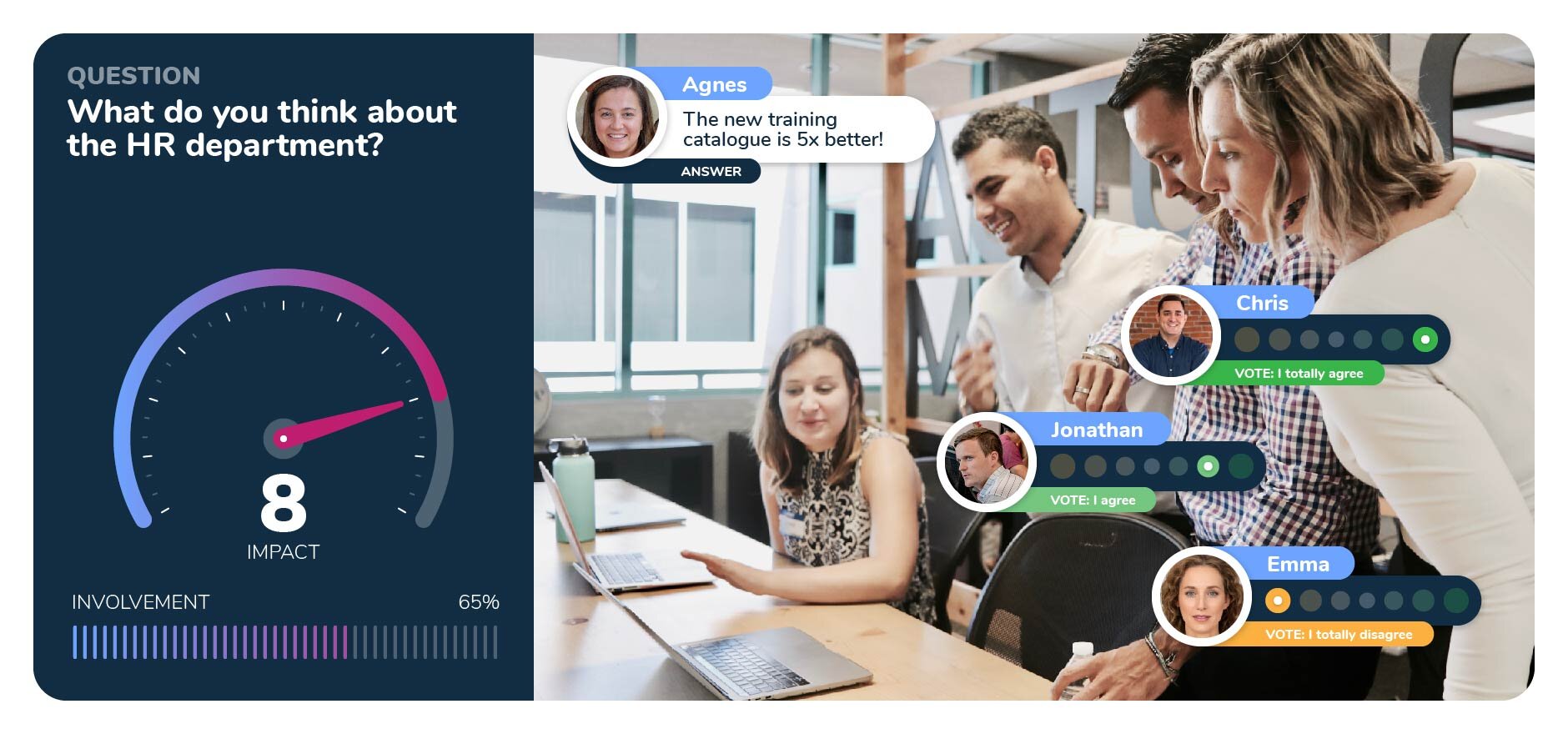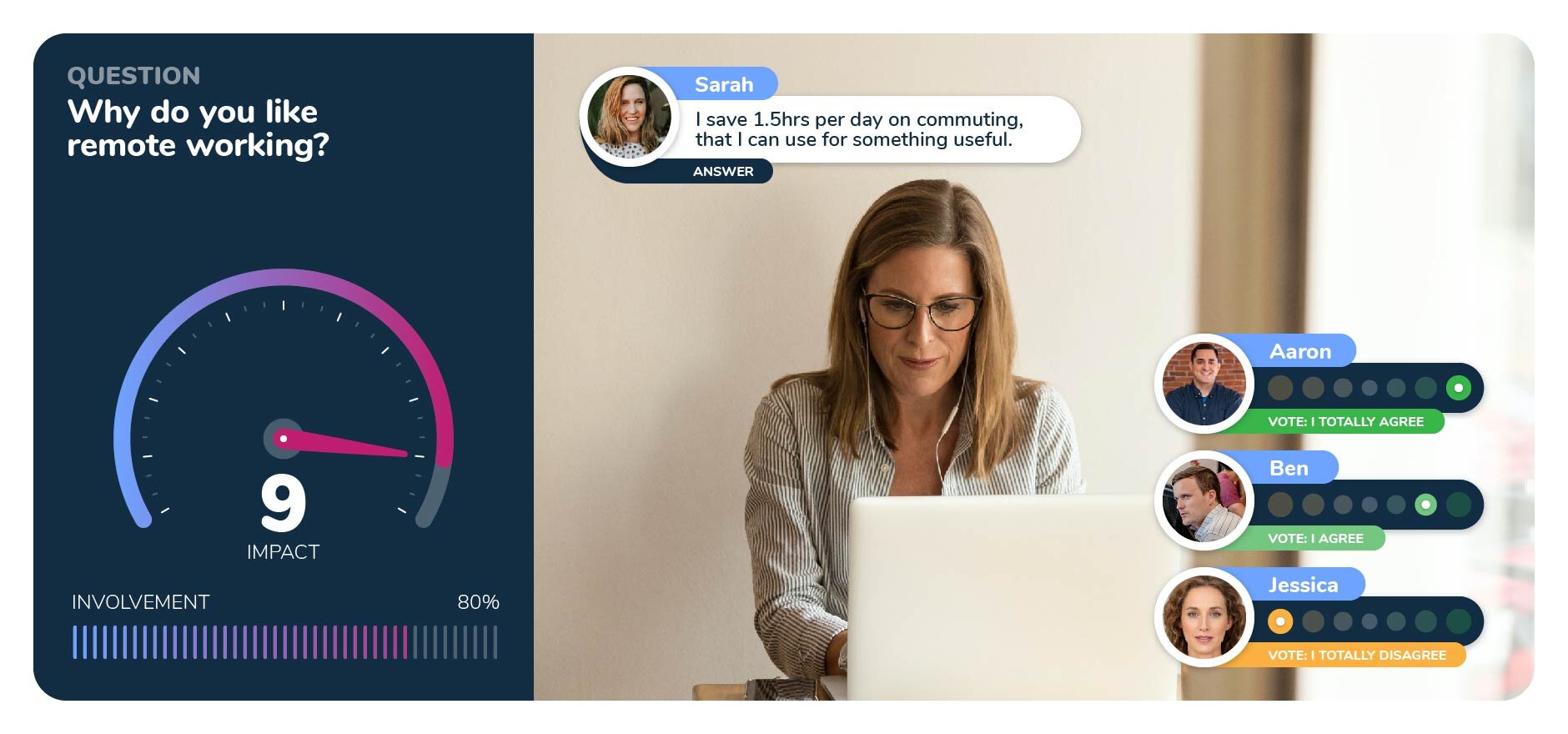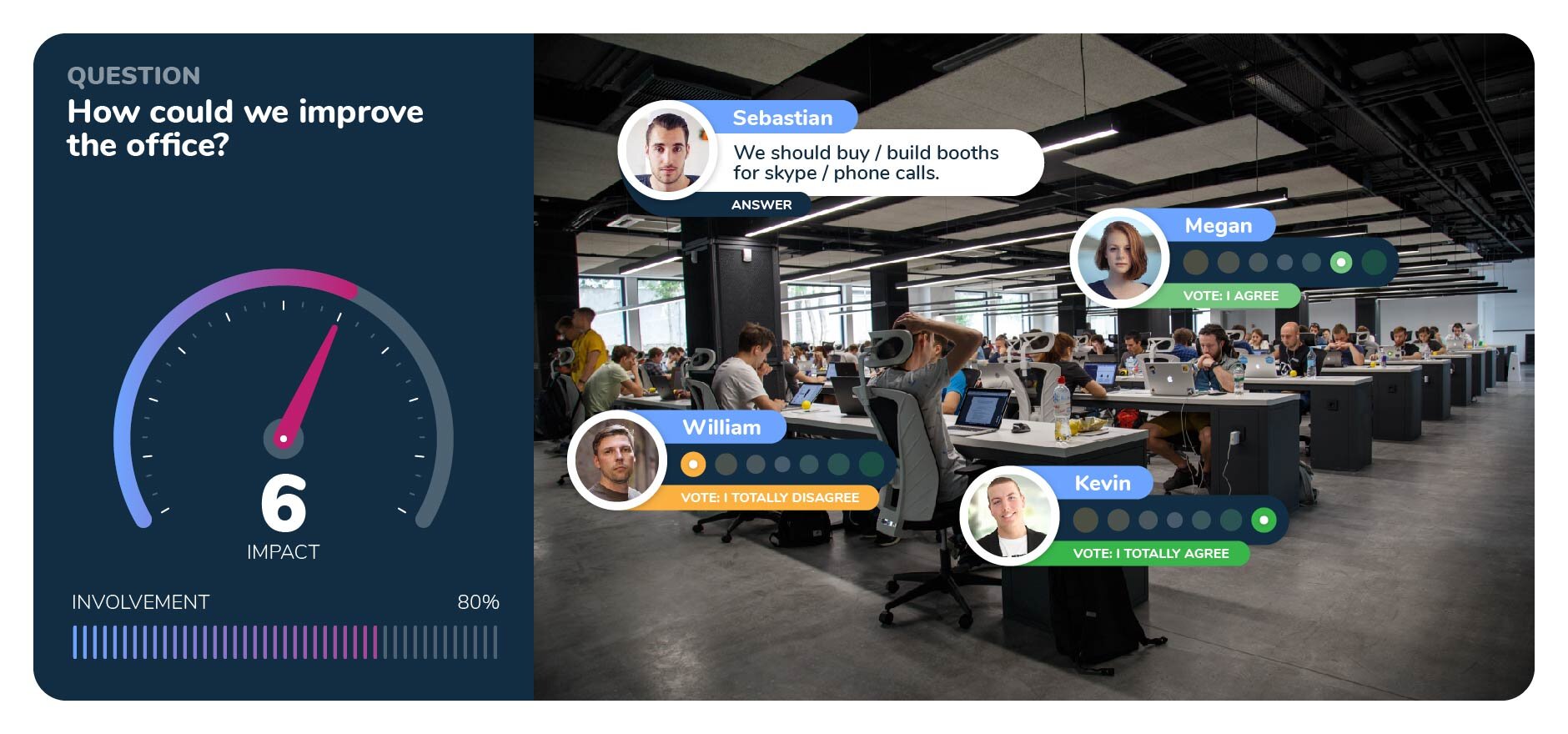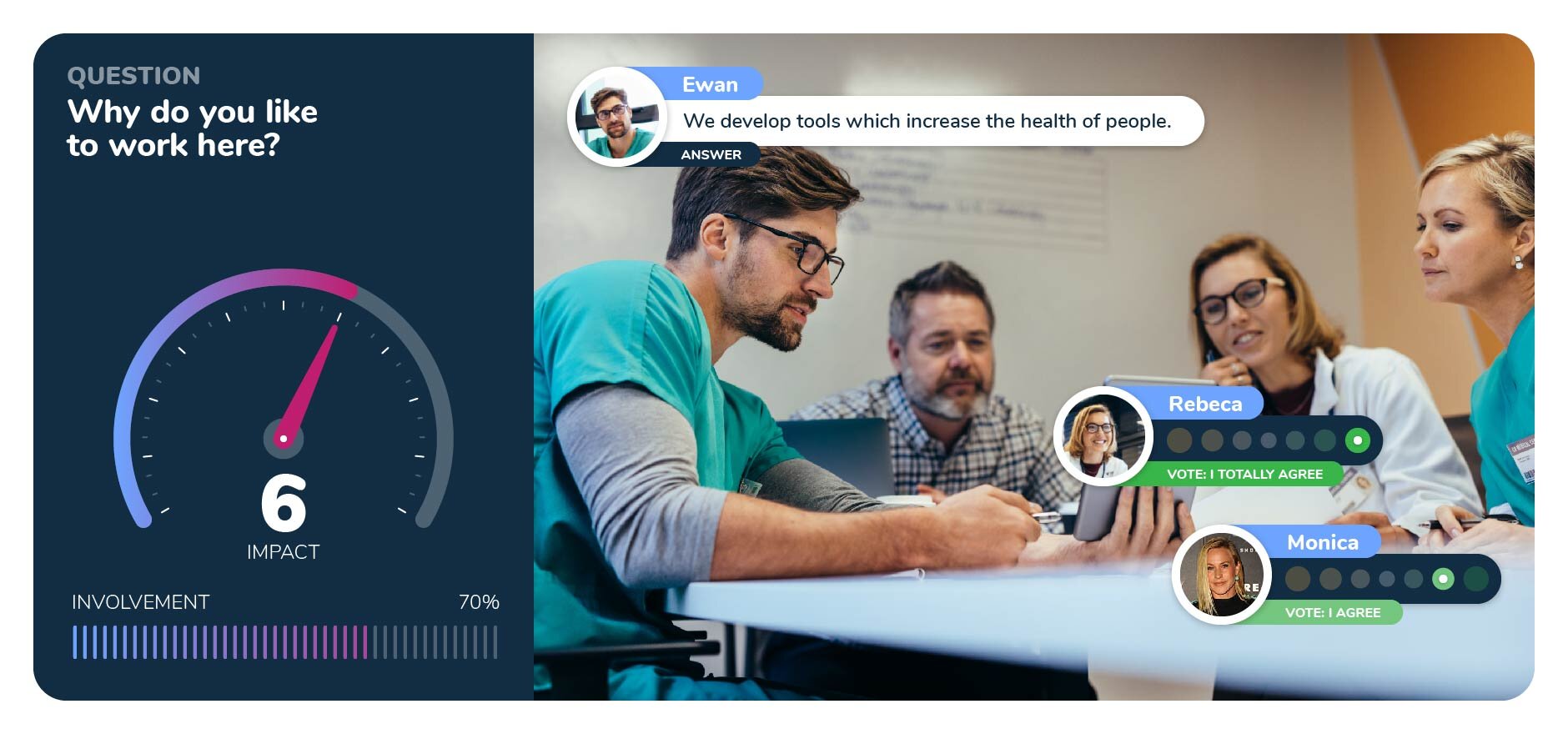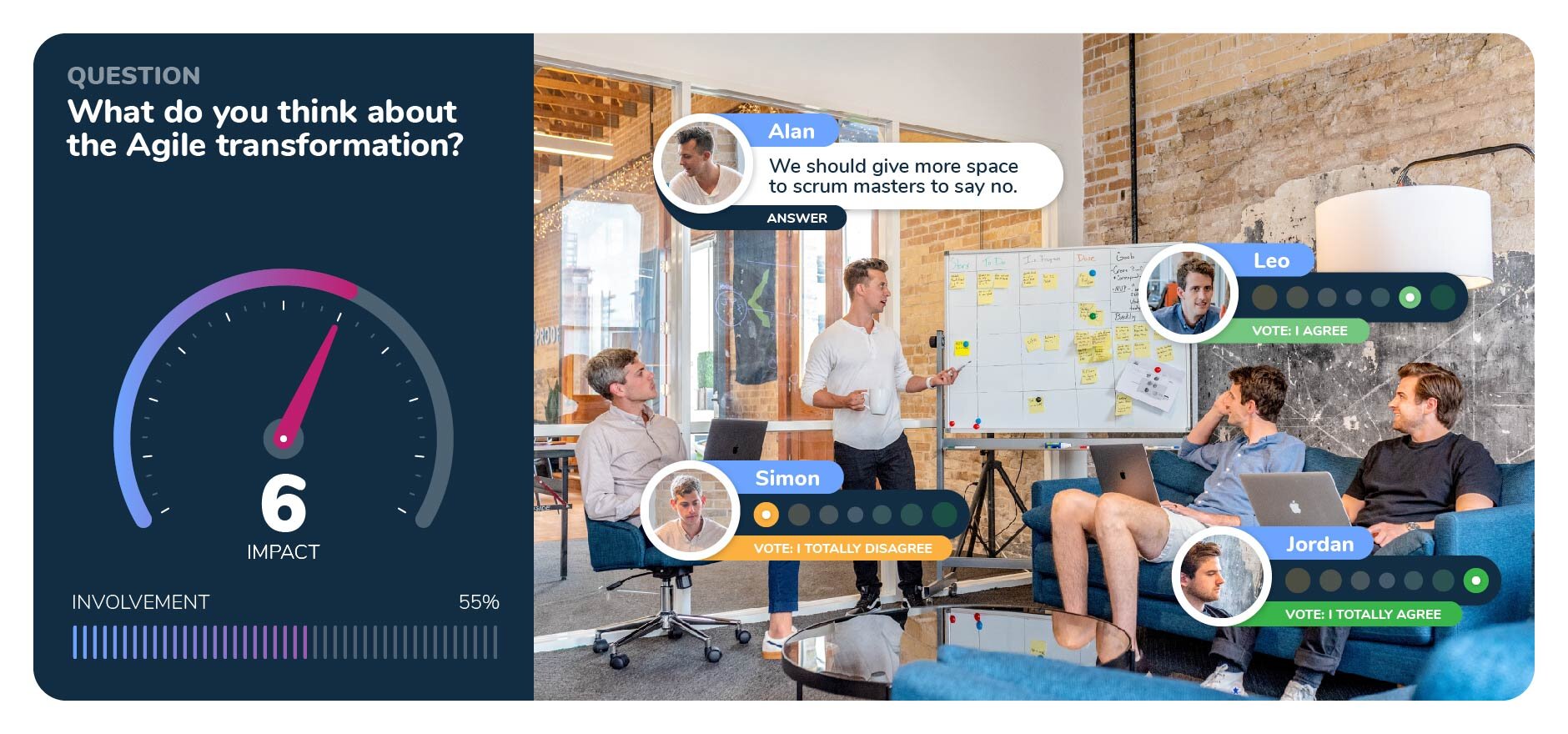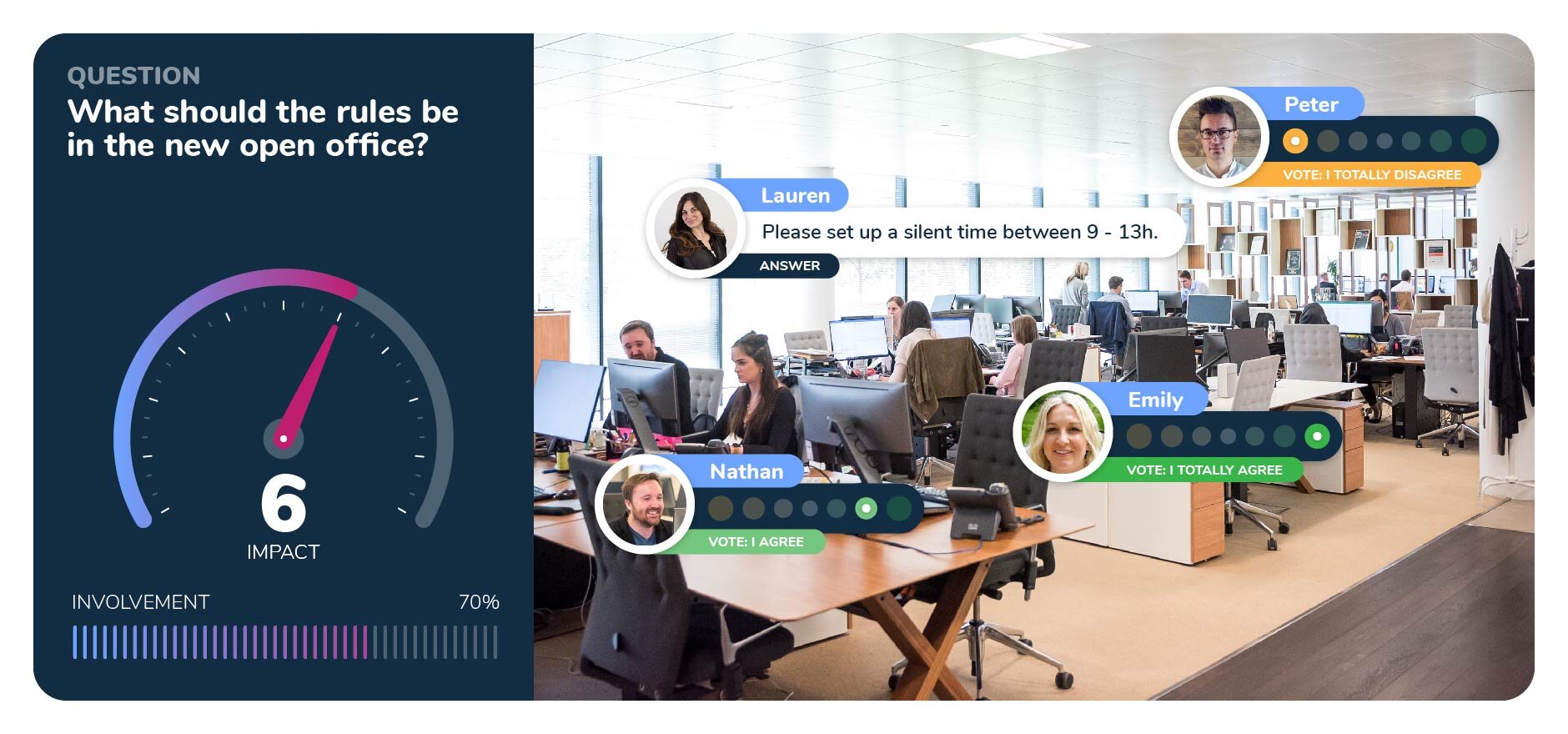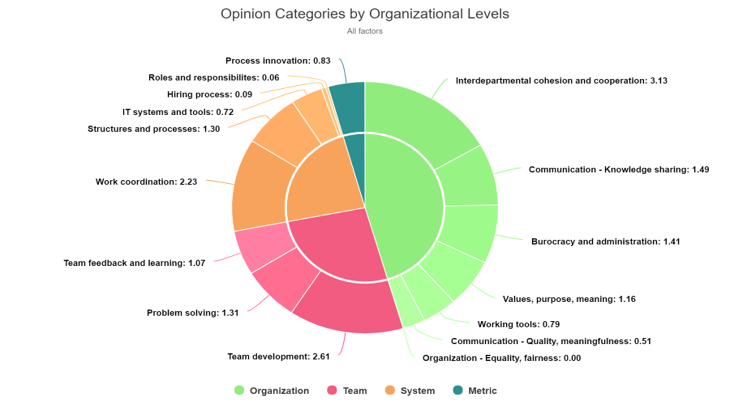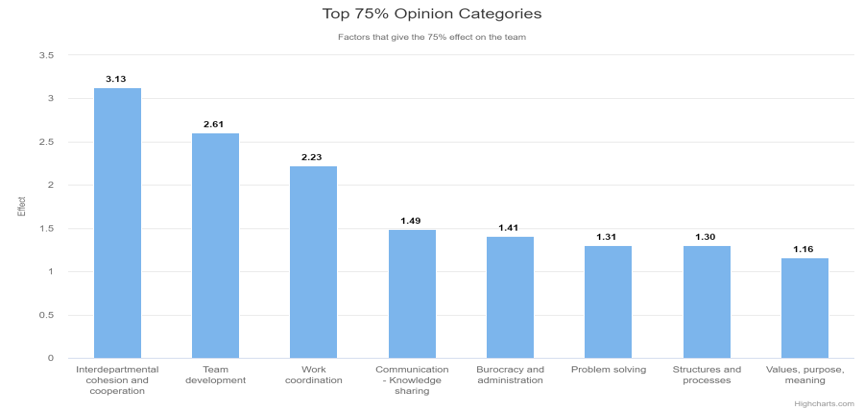
EXCLUSIVE DISTRIBUTOR
FOR THE DACH-REGION
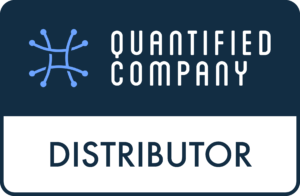
Quantified.Company
Quantified.Company is the tool used to create a feedback and development culture in any organization. It solves three problems at once: it makes employees more engaged, generates diagnostic data and helps implement development actions / strategies.
The genius and at the same time simple basic idea:
use open questions for any question.
Everyone will have the opportunity to express their opinion and others will be able to vote if they agree with it
…. completely anonymous.




People Analytics with a special approach.
HR and OD professionals use surveys to gather insights about employees. However, there are several problems with these surveys. They are usually boring, long, full of numerical questions, and the results are not actionable. If your colleagues fill them out on autopilot, it’s better not to take the results seriously.
Organizations need data
To make HR a strategic partner to management, the first thing it needs is data. The second step is to establish a culture of action planning based on the existing data.
Benchmarking
We benchmark your data against hundreds of other organizations. We’ve developed unique metrics that give you comprehensive insight into your organization and groups.
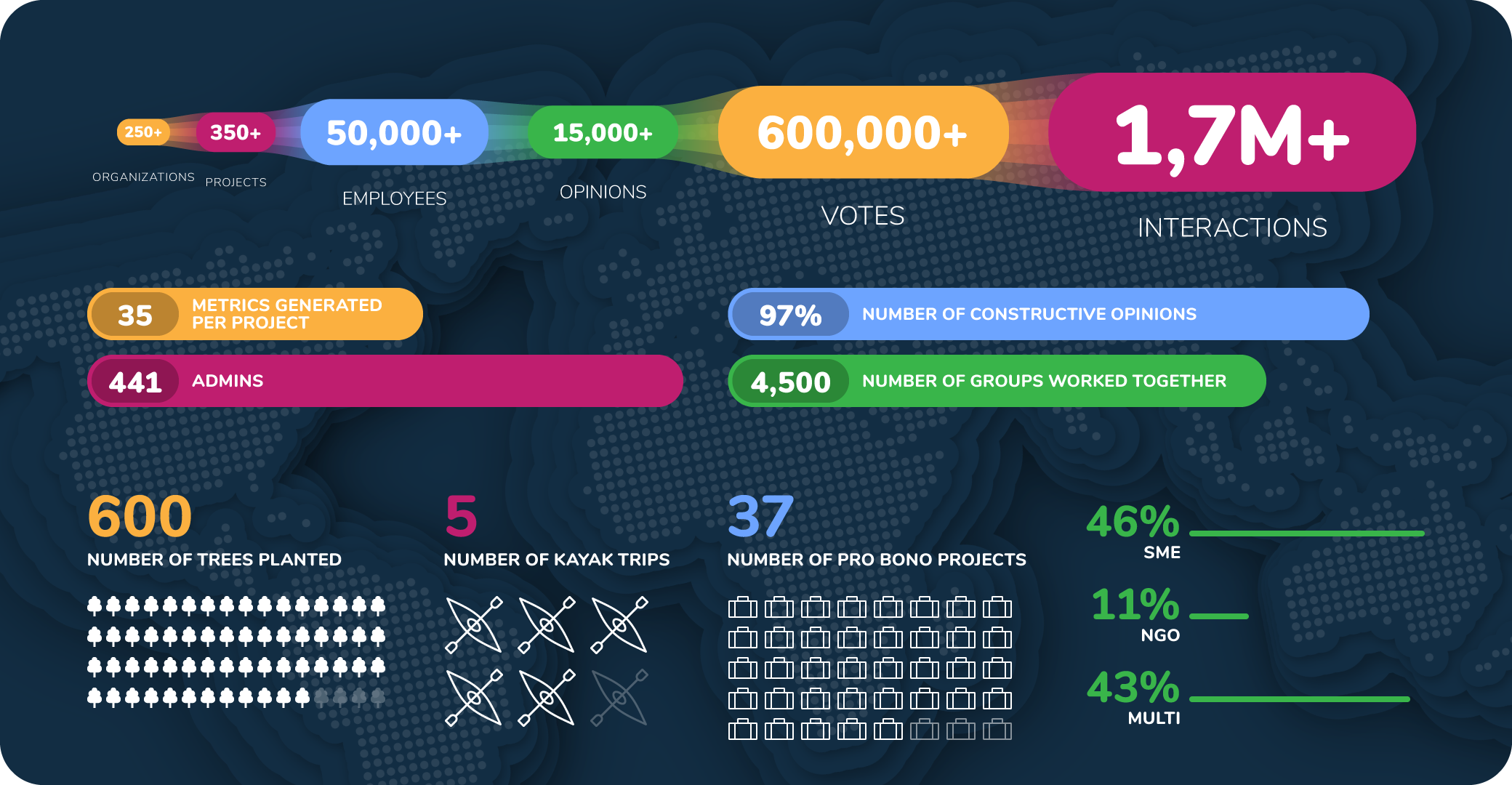
HR data in organizations
Organizations want to make well-informed decisions in areas that affect people. This is because in many areas, so-called “human capital” is the most important element of a company’s assets. This increases the need for HR data processes that meet three basic rules.
- First, data collection and decision making must be a simple, manageable process.
- Second, the data must sufficiently reflect the complexity of prevailing views, perceptions, and facts.
- Third, data collection and use must be a natural process that engages people, not alienates them.
The Quantified.Company system solves this problem in an elegant way:
- High participation rate. Open-ended questions such as “Why do you like working here?” are used; respondents can share their opinions directly and vote on what others say. People like to use their own words and they are interested in others’ opinions.
- Minimal time commitment. Participants spend an average of 2 x 8 minutes in the system.
Survey 1000+ team in one day
Quantified.Company, you can organize a group discussion in the online space and scale it to thousands of participants.
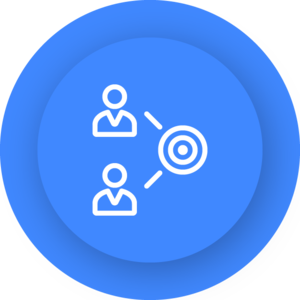
Team work instead of boooooooring surveys
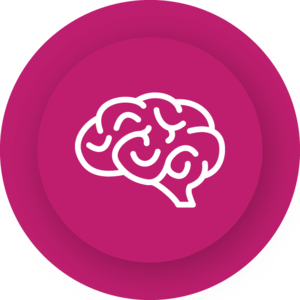
Team + Consultant + Leadership + Artificial INTELLIGENCE
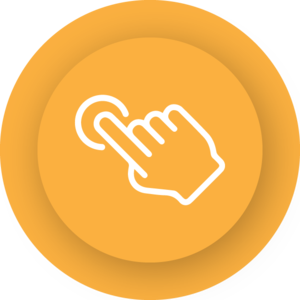
Actionable insights
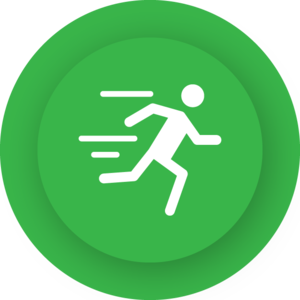
Service not just software, you only need 3-4 hours to start
Why do you like Evil GigaCorp? How could we improve Evil GigaCorp?

Feedback and development culture implemented
There are three basic ways to use the system:
- Two-question project. Two questions are asked: “Why do you like working here?” and “What are the challenges we face now?”. A “deep insight” is generated and a wide variety of information is available for the entire organization and for all measurable groups. Q.C. recommends conducting the Two Questions Project every year.
- Town Hall Meetings Projekt. In this case, one question is asked, such as “What do you want to know from the CEO or board?” This question is best used in preparation for a town hall meeting where the CEO or board will answer key questions. The questions and answers will provide solid data on what the key focus areas and challenges are in the organization. This vast amount of data is used to find quick wins, develop focus areas, and track change. The process is simple, generates engagement and data suitable for agile action planning. Q.C. suggests holding a town hall meeting 3-4 times a year.
- Group feedback and ad hoc feedback. Group feedback can be used with a limited number of people or in a specific area, such as
- Retro: How can we improve the work of the project team?
- Meetings: What would you discuss in the next meeting?
- Cohesion: what should we do in the next team building?
- Remote work: what are your best practices for home office/remote work?
Of course, any such opinion elicitation process should be followed by Management actions should follow. The follow-up measures include communication of the results, quick wins, no-gos and also structural changes.
Once such a feedback and development culture has been implemented, the the QC system to track key metrics over the long term. This opens up a new frontier of knowledge where sudden changes, trends, ongoing and resolved problems can be monitored.
THE EXPERIENCE OF EMPLOYEES IN SURVEYS
can be used for various purposes
WORK EXPERIENCE:
WORK EXPERIENCE:
Challenge, task definition, work tools, skill development, work freedom, meaning, impact.
TEAM EXPERIENCE:
TEAM EXPERIENCE:
Safety, friends, reliability, communication, conflict resolution.
LEADERSHIP EXPERIENCE:
LEADERSHIP EXPERIENCE:
Feedback, recognition, fairness, clarity of expectations, support, management cohesion.
ORGANIZATIONAL EXPERIENCE:
ORGANIZATIONAL EXPERIENCE:
Brand, diversity, fairness, stability, product quality, talent attraction.
ON-BOARDING PROCESS:
ON-BOARDING PROCESS:
Measurement at multiple points in the on-boarding experience, 1st day, 1st week, 1st month, 3rd day, 1st week, 1st week, 3rd month.
EXIT INTERVIEW:
EXIT INTERVIEW:
Why was the work good/challenging for the company?
PROJECTS THAT YOU CAN CARRY OUT
WORKING CLIMATE INDEX
WORKING CLIMATE INDEX
Appreciation: why do you like working here?
Development suggestions: What should be improved?
BRAINSTORMING
BRAINSTORMING
Brainstorming sessions for ideas, for new business models and offers to compensate for revenue shortfalls caused by the crisis.
OPTIMIZATION
OPTIMIZATION
A survey, e.g. on how collaboration (in the home office) can be improved
DECISION MAKING
Ask questions (anonymously), get the opinion of colleagues or team members. Make a decision. Avoid time-consuming discussions.
FEEDBACK
FEEDBACK
Obtain feedback on planned actions and organize coordination.
EXAMPLES OF OPEN QUESTIONS
from a recent survey on working in a home office (remote work)
HOME OFFICE
HOME OFFICE
- What habits, tools work for you when working from home?
- What are the biggest challenges of working remotely for you?
HOW TO GET STRONGER
HOW TO GET STRONGER
- What should we do to become stronger during the crisis?
- What can we accomplish/create during the crisis?
HOW YOU CAN HELP
HOW YOU CAN HELP
- How can your company help you and your loved ones during the crisis?
- How can you help your colleagues during the crisis?
Quantified.Company Projects
With the QC system it is possible to perform both wide-ranging and ad hoc data collections. Long-term processes support strategic interventions, while ad hoc data collection is very well suited for feedback, event preparation of events or diving into focus areas are.
Additionally, long-term processes include smaller elements, such as organization-wide Surveys, randomized follow-up surveys, and post-surveys. A QC project has a simple structure to follow. Basically, after setting up the system (which takes no more than half an hour for everyone after a one-hour introduction), the actual data collection takes a week. After that, QC suggests holding two types of workshops, one for data evaluation and one for action planning.
The measures only work if people engage with them.
People are the best signalling systems for problems that arise in organisations. That’s what makes feedback systems so popular.
People will only change if there is tension. That is why change processes that do not target the problems felt by employees will fail.
Quantified.Company data and their Interpretation
The most exciting part for the consultant or recruiter comes when the data collection is complete and the results are in. It is time to look at them and understand the knowledge presented by the system.
During the survey, statements are organized by category. In addition, in the case of a two-question project, there is a third level of data that combines the results of the two surveys. Thus, each type of data is calculated for each group (even if the group is created after the project), introducing the levels of groups within a two-question project.
At the bottom of the data hierarchy are the voices belonging to the statements. The system builds measured values from these elementary data. All Q.C. measured values express easily understandable facts and provide valuable insights and a basis for action.
General Data Protection Regulation (GDPR)
General Data Protection Regulation
Your data is important for us
Our service is about freely expressing your opinion. Your trust in the way we handle your data is crucial for us. We take data protection seriously, we even like GDPR 🙂 Most of the time (99%) your company is the controller of your data, we only provide a tool for that, therefore we are only data processors. We follow the strict rules of the EU’s GDPR (General Data Protection Regulation), even for customers located outside the EU.
What does that mean for you?
We process your data only in the manner described in our Privacy Policy. We do not keep them forever, but anonymize them when they are no longer needed for your company’s project. If you have any questions about your data or would like to delete your personal data, we recommend asking your colleagues who work with us (usually the HR department). Otherwise, we will also be happy to help you, just send us an email to: quantified.company@eq-train.de
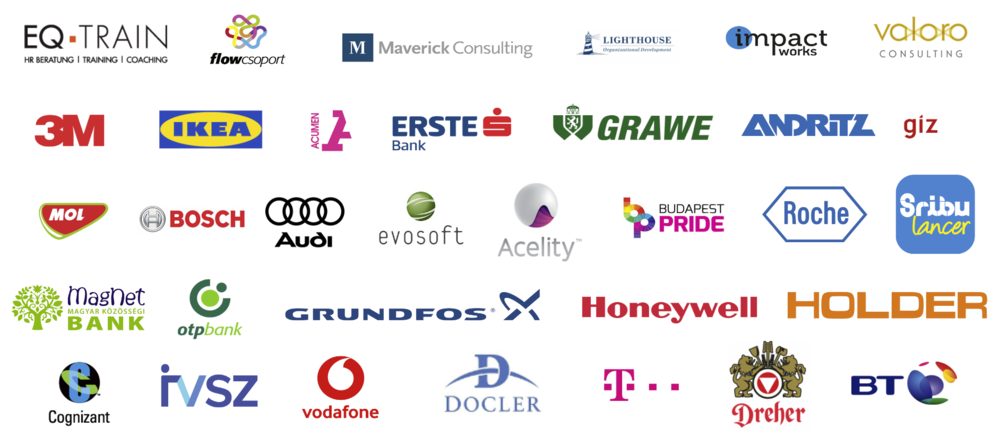
CONTACT US
If you have any questions or would like to use our service, please feel free to contact us.
We will answer your questions within 24 hours.

